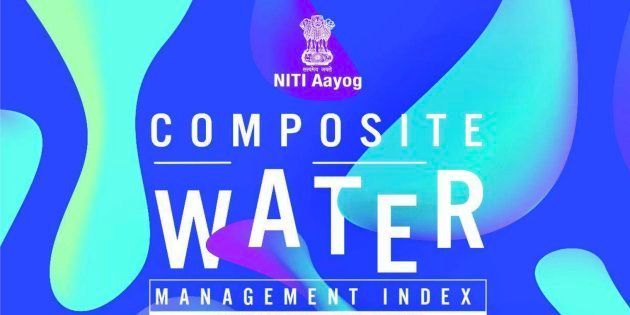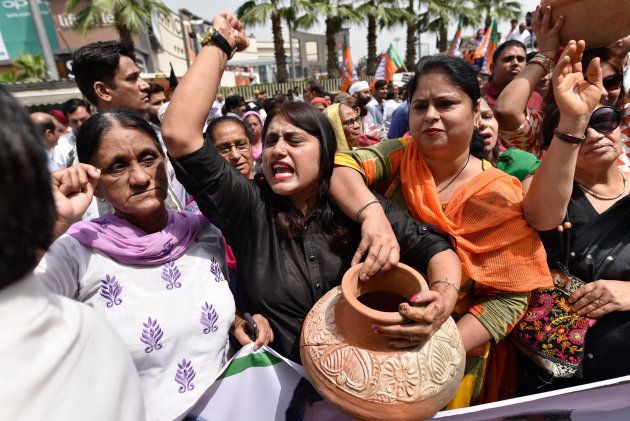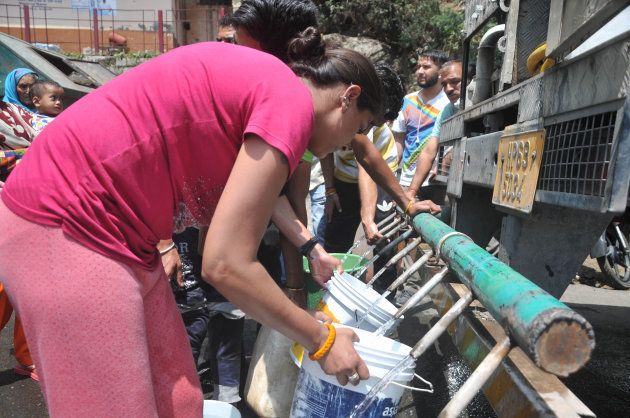
The Niti Ayog's landmark study on the 'Composite Water Management Index' has gathered much attention for its claim that 21 cities in the country, including Delhi and Bengaluru, will run out of ground water by 2020.
Himanshu Thakkar, coordinator for South Asia Network on Dams, Rivers & People, and water expert, agrees that India is facing an unprecedented water crisis, but has questioned the methodology behind the preparation of the report, and also some of its conclusions — particularly the ranking of Gujarat, Prime Minister Modi's home state, at No.1 amongst non-Himalayan states. This despite Gujarat's on-going water crisis at a time when the controversial Sardar Sarovar Dam received significant amounts of water.
Here are excerpts from the interview, lightly edited for clarity and brevity.

How significant do you think the Niti Aayog report is?
The message that it is giving is timely and important. But, the report as a lot of shortcomings. The objective is to improve India's water situation. The process is lax in basic requirements and comprehensiveness.
What do you think are the biggest shortcomings of the report?
It lacks credibility. This kind of a report should be done by independent people. There are 9 themes and 28 indicators in the report for deciding the water situation, but it misses out on so many crucial aspects. Water is not a commodity but an ecosystem. There is no mention of the whole ecosystem.
It has not taken into account several factors like industrial water consumption, climate change, flood management or agricultural water consumption.
Conservation of water has to be a democratic process. There is something called the State Water Regulation Act. None of the states have implemented it and there is no mention of that in the report.
"The report puts Prime Minister Narendra Modi's state at the number 1 spot with the water index score. Gujarat is facing the worst water crisis ever this year. This is after the Saradar Sarovar dam had the highest supply of water available this year."
They have mentioned Himachal Pradesh as one of the top performers of managing water resources when the capital of the state, Shimla, is facing an acute shortage of water.
Apart from Gujarat, the Niti Aayog report mentions that Madhya Pradesh, Andhra Pradesh, Karnataka and Maharashtra are also top performers in managing water resources. Do you think the data is correct?
There has been a complete mismanagement of resources of water in Gujarat. They have mentioned Himachal Pradesh as one of the top performers of managing water resources when the capital of the state, Shimla, is facing an acute shortage of water. And this could have been completely avoided.
The way that the study is conducted, because of the way that they have framed the themes and indicators, they have ended up with a wrong and misguided result.

The report also suggest several measure like a 'Composite Water Management Index', incentive based mechanisms for groundwater restoration, consumption based water tariffs, supply networks for states and limiting private groundwater access. Do you think these will help the water situation in the country?
A lot of these things were already known. The problem won't be solved unless we have a full comprehensive report on the issues.
The report has mentioned that there are 12 million ground water reserves in India. That is not correct information. Several planning commission reports have mentioned that there are 30 million ground water reserves.
The report rightly says that the data on water in India is poor and lacks in rigour. Who collects the data in India? The Central Water Commission. However, the report has not named the institute. You can't start fixing the problem unless you them them.
If you go through the report, they have not name properly who has done the research. They have named some independent organisation called IP Global that has no great track record of work on water. It is an in-house study conducted by the Niti Aayog that did not have one participant from civil society or independent experts.
"It is the first ever such exercise and, in my eyes, does not have much credibility. They have various aspects to improve upon."
This report is the first time they have conducted such a study and it claims that it will transform India's water problem. They have also given top position to the Prime Minister's state.
It also talks about co-operative federalism. Look at what is playing out in Delhi. The Centre is not allowing the government to function. They have no data from Kashmir, Delhi or West Bengal. They say they did not get data from the states. Then how have they come up with this without data from those state?
Do you think that there is anything that can be a take away from this report?
The report itself is welcome. The warning they gave issued is right. It actually goes against the government. But in spite of that, it is the first ever such exercise and, in my eyes, does not have much credibility.